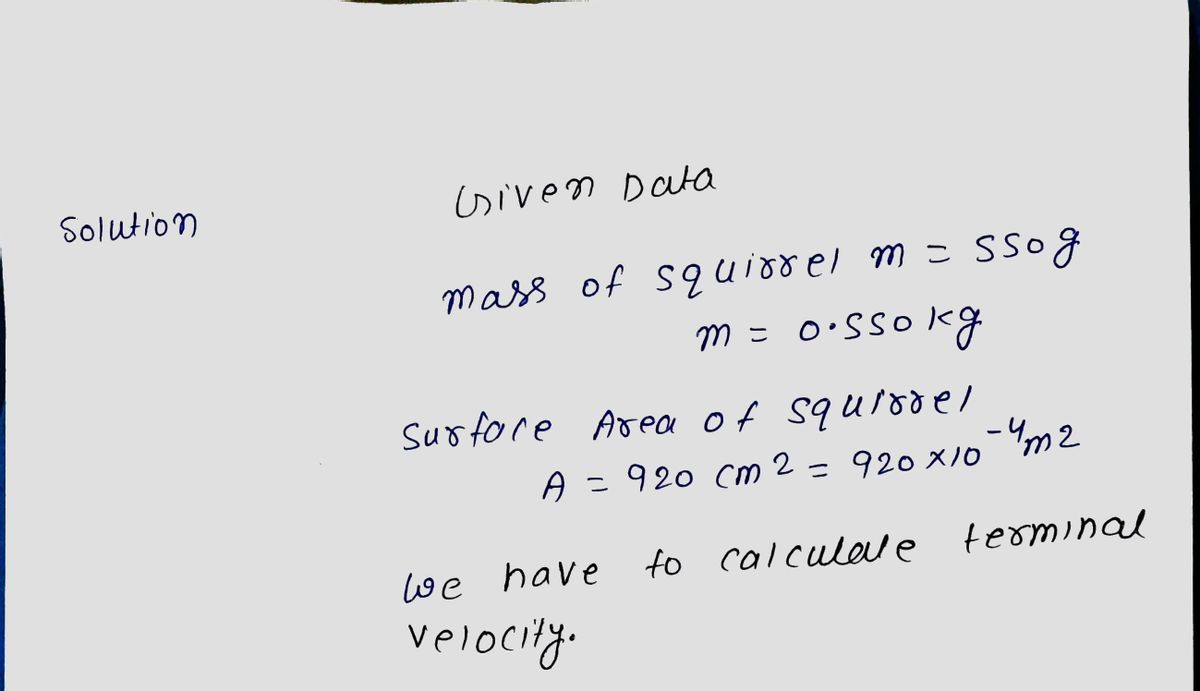A 550 g squirrel with a surface area of 920 cm2 falls from a 5.6-m tree to the ground. Estimate its terminal velocity. (Use the drag coefficient for a horizontal skydiver. Assume that the squirrel can be approximated as a rectanglar prism with cross-sectional area of width 11.5 cm and length 23 cm. Note, the squirrel may not reach terminal velocity by the time it hits the ground. Give the squirrel's terminal velocity, not it's velocity as it hits the ground.) What will be the velocity of a 55.0 kg person hitting the ground, assuming no drag contribution in such a short distance?
A 550 g squirrel with a surface area of 920 cm2 falls from a 5.6-m tree to the ground. Estimate its terminal velocity. (Use the drag coefficient for a horizontal skydiver. Assume that the squirrel can be approximated as a rectanglar prism with cross-sectional area of width 11.5 cm and length 23 cm. Note, the squirrel may not reach terminal velocity by the time it hits the ground. Give the squirrel's terminal velocity, not it's velocity as it hits the ground.) What will be the velocity of a 55.0 kg person hitting the ground, assuming no drag contribution in such a short distance?
Related questions
Question
A 550 g squirrel with a surface area of 920 cm2 falls from a 5.6-m tree to the ground. Estimate its terminal velocity. (Use the drag coefficient for a horizontal skydiver. Assume that the squirrel can be approximated as a rectanglar prism with cross-sectional area of width 11.5 cm and length 23 cm. Note, the squirrel may not reach terminal velocity by the time it hits the ground. Give the squirrel's terminal velocity, not it's velocity as it hits the ground.)
What will be the velocity of a 55.0 kg person hitting the ground, assuming no drag contribution in such a short distance?
Expert Solution
Step 1

Trending now
This is a popular solution!
Step by step
Solved in 3 steps with 3 images
